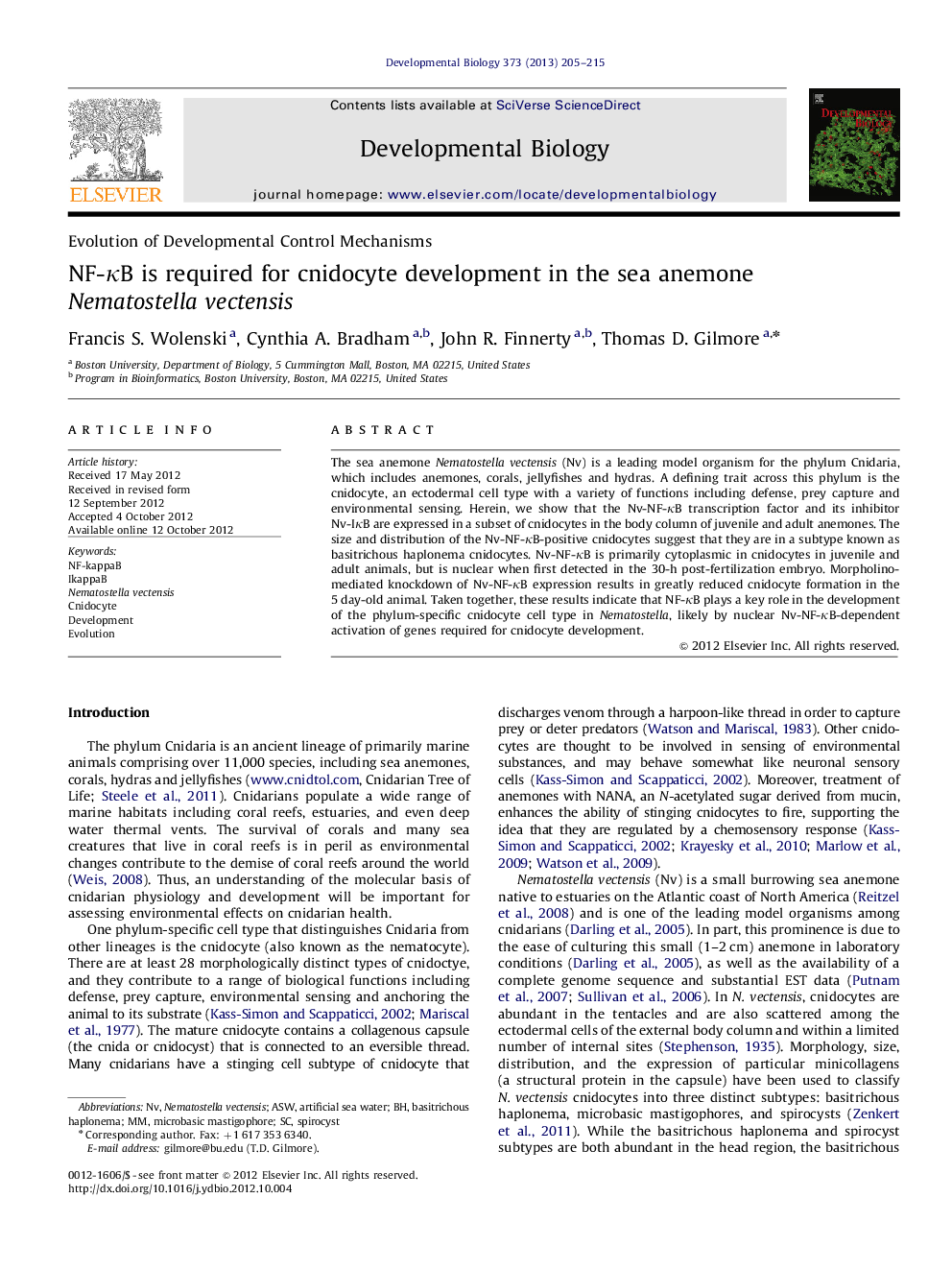| کد مقاله | کد نشریه | سال انتشار | مقاله انگلیسی | نسخه تمام متن |
|---|---|---|---|---|
| 2173148 | 1093697 | 2013 | 11 صفحه PDF | دانلود رایگان |

The sea anemone Nematostella vectensis (Nv) is a leading model organism for the phylum Cnidaria, which includes anemones, corals, jellyfishes and hydras. A defining trait across this phylum is the cnidocyte, an ectodermal cell type with a variety of functions including defense, prey capture and environmental sensing. Herein, we show that the Nv-NF-κB transcription factor and its inhibitor Nv-IκB are expressed in a subset of cnidocytes in the body column of juvenile and adult anemones. The size and distribution of the Nv-NF-κB-positive cnidocytes suggest that they are in a subtype known as basitrichous haplonema cnidocytes. Nv-NF-κB is primarily cytoplasmic in cnidocytes in juvenile and adult animals, but is nuclear when first detected in the 30-h post-fertilization embryo. Morpholino-mediated knockdown of Nv-NF-κB expression results in greatly reduced cnidocyte formation in the 5 day-old animal. Taken together, these results indicate that NF-κB plays a key role in the development of the phylum-specific cnidocyte cell type in Nematostella, likely by nuclear Nv-NF-κB-dependent activation of genes required for cnidocyte development.
► Transcription factor NF-κB is studied in the sea anemone Nematostella vectensis.
► NF-κB and its inhibitor IκB are expressed in cnidocytes in adult anemones.
► NF-κB is nuclear in early embryogenesis, but is cytoplasmic in cells of older animals.
► NF-κB knockdown shows that it is required for cnidocyte development.
Journal: Developmental Biology - Volume 373, Issue 1, 1 January 2013, Pages 205–215